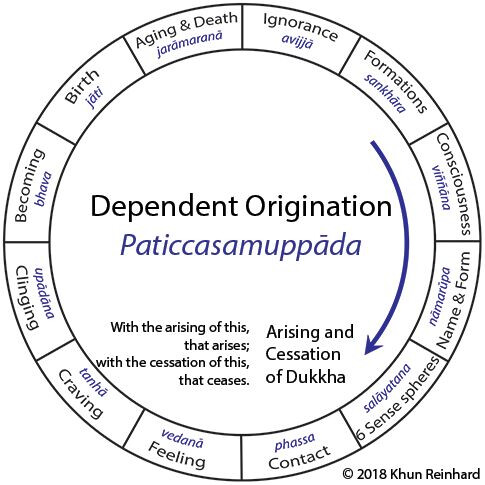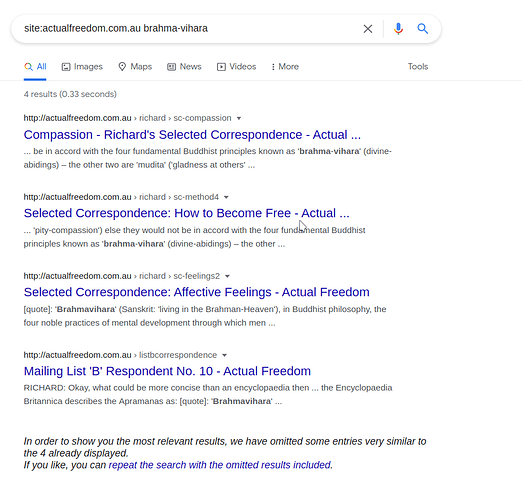@adivader if you’re still around would be good to hear from you …
I have been meditating since mid 2016. I gained Streamentry in end 2018. I gained Sakadagami in mid 2019. I gained Anagami in end 2020 and Arhatship in 2021 about 6 months ago.
Copy that. How would you say your life has changed since you became an arahant i.e. in terms of work, family and your general experience of life when contrasted with stream-entry or prior? Was there a big change from anagami to arahant?
I have an account on DhO but I participate sparingly over there. I have read MCTB and found it a motivating book, but it wasn’t part of my practice curriculum. I have meditated in line with the Satipatthana Sutra as my insight practice and Asanga’s elephant path (as represented in a book - The Mind Illuminated), I have practiced all 8 jhanas and Nirodha Sampatti, as well as a concentration practice called Nirvikalpa samadhi. My formal seated practice upto maybe 7 to 8 months ago was 3500 hours. After that I stopped tracking it. But I have been meditating approximately 3 hours everyday in that period. My teacher is Stephen Procter a teacher in the lineage of Mahasi Sayadaw from Myanmar/Burma. But Stephen is not a teacher of the Mahasi method. His teachings are heavily directed towards the characteristic of Anatma (absence of a soul) rather than that of Anitya (unreliability).
I always had the impression that anatman and anitya were intertwined in Buddhism. What are the implications of emphasising one over the other when it comes to Buddhist awakening? Is Stephen an arahant himself and does he recognise you as such? - just curious about this, although it doesn’t really make a difference one way or the other.
You can read the criteria that I use here: https://www.reddit.com/r/streamentry/comments/o8sl9f/vipassana_the_awakening_project_part_1_dus/ 5 This is a definition based on the 10 fetter model that I have created using my own understanding and is mostly in line with the sutras
The phrasing you have used seems to be quite unique and different from elsewhere I have read e.g. Pali Canon and Abhidhamma as Wikipedia notes Fetter (Buddhism) - Wikipedia and which is elaborated on here Abandoning the ten fetters What is your explanation or take on this?
The link between Vedana (valence) and Trishna (thirst) has to be broken by everybody who wishes to attain to Arhatship. The link between Sparsh (contact) and Vedana (valence) is something that is possible as attainment but it is not a criteria or necessary condition to attain to Arhatship.
Got it. I found a nifty DO table which I have attached for the benefit of others.
If by feelings you mean vedana or valence - a sorting tag of positive negative neutral against all sparsh (sense contact) then yes, I have it but can stop it at will. Emotions: I don’t experience Fear, Misery, Disgust or any variant or consequent thereof : Anger, Jealousy, Anxiety, Panic - nothing
This I had to do a fair bit of reading to get my head around. From what I gather there isn’t a single word for emotion or feeling in Buddhism. Instead emotion is a complex construct which isn’t necessarily clearly differentiated from thought, both of which are included in the general realm of mental activity. Generally it seems that emotion is the outcome of multiple interacting processes of the skandhas or aggregates…
- Form (Pali, rupa)—Physical world
- Sensation or Feeling (vedana)—Responses to experience: like, dislike, or indifference (also translated as hedonic tone or valence)
- Perception (sanna)—Recognition or interpretation of sense objects followed by mental labeling.
- Mental formations (sankharas)— Volitional mental actions, triggered by some object, that produce karma
- Consciousness (vinnana)—Cognizance, including thoughts, which this system views as sense objects perceived through the “sense gate” of the mind
But a more comprehensive framework would also include other elements like heart-mind (citta), deep proclivities (anusaya), motivations (muula), craving (tanha)
(sources: Accesstoinsight, Padma De Silva and some other stuff on the interwebs I can’t remember)
Not sure if you would agree with this. From what you have written it seems that you experience emotion but at will are able to uncouple the categorisation of emotion (valence) in response to a trigger? Also you experience positive emotions but none of the negative emotions you mentioned i.e. do you experience love, compassion, joy as a felt emotion?
The self is seen as a construct - a very useful construct. But it is not seen as the ‘self’ anymore. I am not sure if I am expressing this sufficiently. Emptiness: It is seen, understood and digested that meaning is imputed by the mind. All of conscious experience is created by the mind, all meaning it has is imputed by the mind. The ‘weight’ is nil. Again I don’t know if I have explained myself sufficiently.
Are you saying that your sense of self is seen through therefore does not have any power over you? Hmmm not sure what you mean by the words ‘imputed by the mind’. Emptiness I understand conceptually (obviously not experientially) from what I have read about Nagarjuna/Madhyamika. Is that the experience you speak of?
P.S. I am not an MCTB Daniel Ingram path model Arhat …
Can you tell us the difference between an MCTB Arhat and yourself?
It has actually been pretty interesting to go back and study a little Buddhism after all these years. It is a whole other world really  I’ve long known the distinctions between Buddhism and AF but there is a bit more clarity now in terms of the detail.
I’ve long known the distinctions between Buddhism and AF but there is a bit more clarity now in terms of the detail.




